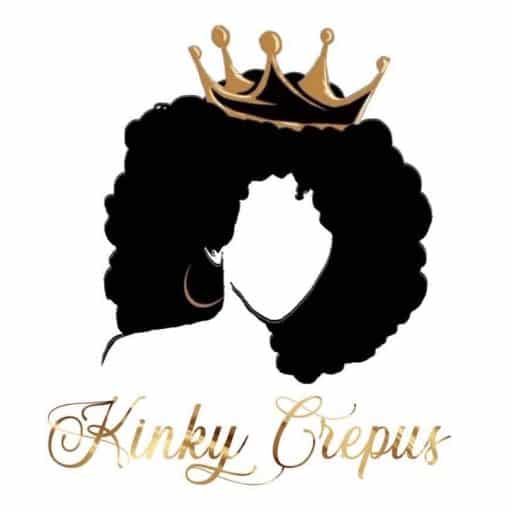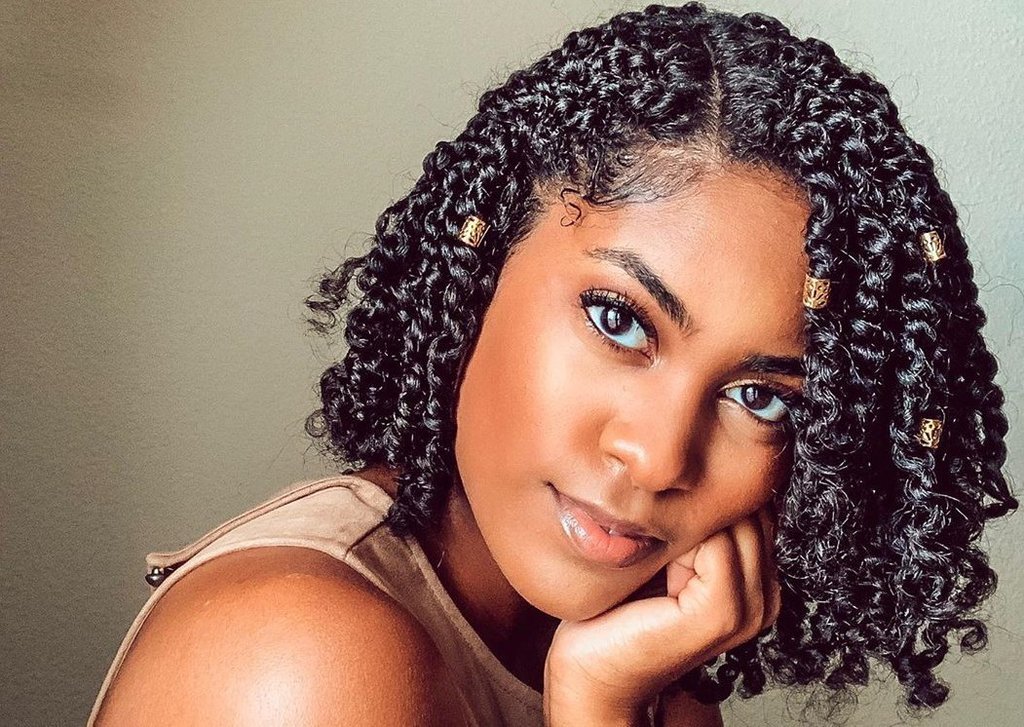How much time per day would you like to dedicate to your protective hairstyle? I bet it’s a minimum, but you want a stylish look, right?
Well, women with kinky hair are fortunate to have thick and dense hair that can create breathtaking hairstyles.
What is a protective hairstyle? A protective hairstyle is one that minimizes hair manipulation while safeguarding the entire hair, from root to tip. It helps reduce breakage, knots, and hair loss. Styles like braids or twists fall into the category of protective hairstyles.
However, the natural dryness and fragility of kinky hair are other factors to consider, requiring regular hair care.
That’s why protective hairstyles for kinky hair are ideal!
To start, let’s first discuss the benefits of protective hairstyles for Afro-textured hair:
The 8 Benefits of Protective Hairstyles:
- Protects against environmental factors (sun, pollution, wind…)
- Maintains moisture
- Requires minimal manipulation
- Many easy-to-achieve styles
- Length retention
- Promotes growth with proper care
- Saves you time in the morning
- Provides an elegant and trendy appearance
In addition to a flawless, elegant look, protective hairstyles maintain the health of your hair tips and shield them from harsh elements. How can you enhance their protective effects?
Our hair can do just about anything. But before you decide on your next hairstyle, make sure you know the basics.
What Makes a Protective Hairstyle?
There are 4 crucial elements that make a protective hairstyle:
- It should not be too tight.
- It should not be worn for an extended period.
- Hair should be adequately hydrated.
- It should protect the entire hair, from root to tip, to minimize manipulation.
In summary, protective hairstyles help keep textured hair healthy by limiting exposure to damage from the sun, heat, cold, or excessive manipulation.
Kinky hair is already drier and prone to breakage, so a protective hairstyle can help your hair retain moisture and grow faster.
However, it’s essential to ensure your natural hair is in good condition before getting a protective style.
It’s best to have a good haircut or a solid foundation before braiding to ensure your hair can withstand any “tension.”
Once you’ve chosen your hairstyle, pay attention to the tension on your scalp and make sure the base is not too tight.
Otherwise, it can lead to traction alopecia, headaches, and scalp pain.
While many of us grew up believing that pain was part of the process when getting braids, we now know that apparent tension can actually cause hair loss, which is the opposite of what you want with a protective hairstyle.
What’s the Best Way to Maintain an Afro Protective Hairstyle?
Pre-Treatment
The day before getting a protective hairstyle, always make sure to wash your hair thoroughly, including cleansing with a clarifying shampoo, applying a protein treatment, and using a nourishing hair cream or lotion.
Leave Your Baby Hair Alone
Protect your baby hair, ladies!
When getting braids or twists done by a stylist, make sure to tell them not to touch your baby hair (the very short hairs on your temples).
If you’re not careful, this can lead to significant and potentially irreversible hair loss.
Hydrate with a Spritzer
When you’re wearing a protective hairstyle, you might think you don’t need to moisturize, but that’s far from the truth. Your curls are even more prone to dryness.
So, use a water-based moisturizing cream or leave-in conditioner in a spray bottle to easily reach your roots between your braids or twists.
Sleep on a Satin Pillowcase or Bonnet
To keep your protective hairstyle as fresh as when you left the salon, one of the most important things is to make sure you sleep on satin at night.
Unlike cotton, satin helps your hair retain moisture and prevents frizz, which will help prolong the life of your hairstyle.
In short: If you don’t sleep on satin or silk at night, don’t expect your hairstyle to last long.
Massage Your Temples and Scalp
You can also add a hair oil to your routine to prevent dryness. The advice is to apply the oils directly to your scalp and temples.
Then, give your scalp a good massage for three minutes. Just a few drops. Do this at least twice a week, and your scalp will thank you later.
How Long Can a Protective Hairstyle Last?
There’s no fixed rule for how long protective hairstyles should last, but there is an expiration date!
Hairstyles with extensions like box braids can usually last up to 1 month.
We recommend not keeping your hairstyles for more than 3 weeks. Wearing them longer can dehydrate your hair and hinder its growth.
Which Protective Hairstyle Should You Choose?
There are hundreds of Afro protective hairstyles to choose from, which can make the decision challenging.
The best way to know which hairstyle is right for you is to understand your hair type and whether your hair handles manipulation well.
For example, for some women, African braids promote growth, while for others, they can cause breakage.
Here are some hairstyle ideas to help you decide.
13 Protective Hairstyle Ideas
1 – Braids
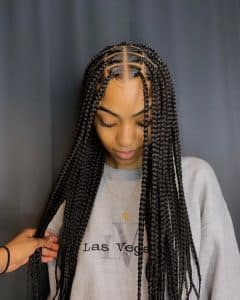
When it comes to protective hairstyles, short, medium or long braids all over the head are a classic!
The best thing about braids?
They last a few weeks and require little effort to maintain.
2 – Cornrow Twists
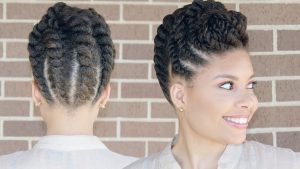
Some protective hairstyles, such as add-ons with highlights, can pull on the temples and your natural hair, which is exactly the opposite of what you want.
To combat this, you can opt for bonded twists or vanilles. They have the same effect, but are lighter and easier to wear.
3 – Box Braids

There’s a reason why box braids are one of the most popular protective styles: they’re easy to maintain, yes, but they’re also very versatile.
There’s no limit to the hairstyles you can achieve!
The sections are square and larger, which, coincidentally, also means less setting time and less maintenance.
4 – Torsades collées & torsades simples
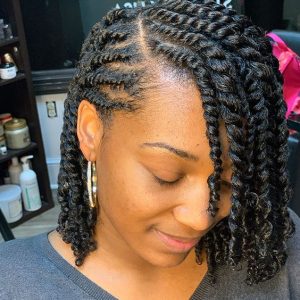
Twists are a perfect example of a modern, easy-to-protect hairstyle.
The front part can be used as a fringe, adding a pretty asymmetrical element to your hairstyle. The back is raised, adding height and class.
5 – Twist headband
Part your long or short hair to the side and twist the front sections into a twist (2 strands).
The hairstyle is quick and easy to achieve at home, without any special tools.
It’s a great way to quickly style your hair, then undo it on wash day.
6 – Twists, one of the simplest protective hairstyles
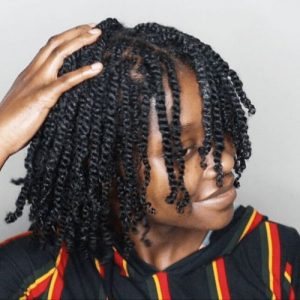
7 – Double twists
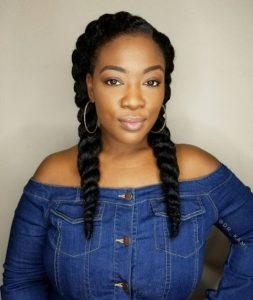
Two long, twisted braids are an excellent choice for medium-length natural hair when protection from heat, cold and sun is required. Braids are perfect, feminine and attractive.
8 – Low bun with side twist
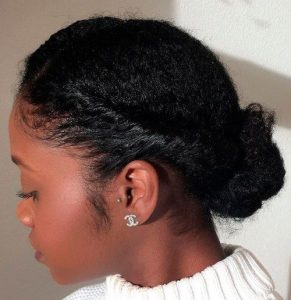
A low chignon is an easy, classic hairstyle for any occasion. It’s ideal if you’re having a work presentation, lunch or after-hours event.
9 – Twist crown
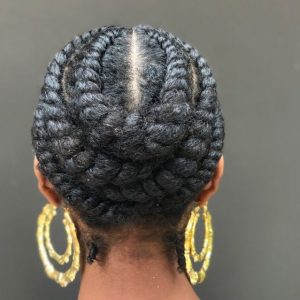
Get your twist on! A fabulous hairstyle. If you want a feminine style that’s easy to achieve, make twists adorned with accessories. What a beautiful crown!
10 – Twist & bun, one of the classiest protective hairstyles
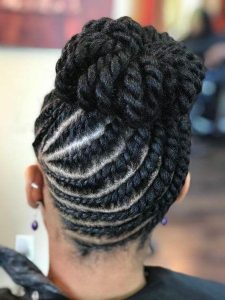
It’s one of the most elegant and sophisticated hairstyles for frizzy hair, and you can do it yourself! For a casual, elegant and dazzling look!
11 – Braids or twists with accessories

This style is rich in cultural heritage and has a bohemian vibe. Her two braids are gorgeous! With accessories, they create a hippie look for happy, sunny days.
12 – Bonded twists
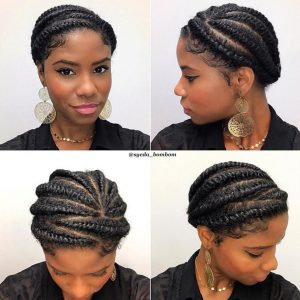
Simple glued twists are cute and eye-catching. Everything is organized! It’s a practical hairstyle for frizzy hair and looks fantastic on most women. The delicately plated temples add softness and femininity.
13 – Giant twists
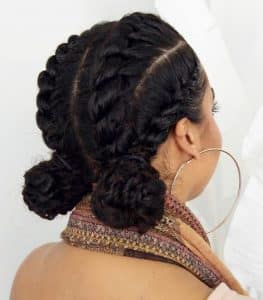
A cute, expressive look! This protective hairstyle contains giant twists that slide fluidly into low buns.
You can ask your hairdresser to make as many braids as you like!
In Conclusion
If one of your hair goals is to protect your hair from damage and breakage, you should incorporate protective hairstyles into your hair care routine whenever possible.
Protective hairstyles are one of the best ways to promote hair growth and keep your hair healthy. These hairstyles require minimal manipulation, help retain length, and protect your hair tips, reducing knots, breakage, and dryness.
So, which protective hairstyle will you choose? If you’re still undecided, check out our ultra-trendy hairstyles for kinky hair !
